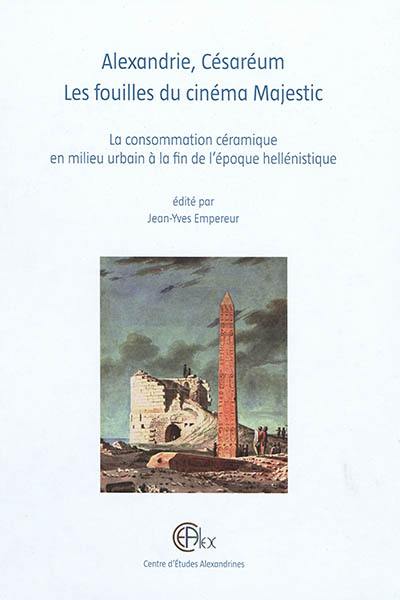
Fiche technique
Format : Relié
Nb de pages : 368 pages
Poids : 1600 g
Dimensions : 21cm X 29cm
ISBN : 978-2-11-129852-1
EAN : 9782111298521
Alexandrie, Césaréum
les fouilles du cinéma Majestic
la consommation céramique en milieu urbain à la fin de l'époque hellénistique
Quatrième de couverture
En 1992, le CEAlex a inauguré au coeur de la ville d'Alexandrie une longue série de fouilles de sauvetage urbain par l'exploration de la parcelle de l'ancien cinéma Majestic. Ce terrain se situe à 60 m au sud des deux obélisques qui marquaient l'entrée du Césaréum. Parallèle à l'alignement des obélisques, un mur d'une douzaine de mètres de longueur a été mis au jour au niveau de la nappe phréatique. Un important remblai riche en céramiques a été fouillé au nord de ce mur, dans deux unités stratigraphiques, les US 117 et 119. Céramique fine, commune, culinaire, amphores datent l'installation du futur temple du culte impérial et caractérisent le faciès urbain de la fin de la période hellénistique et du début de l'époque augustéenne. Cet ensemble apporte de précieux renseignements sur les productions locales (alluviale et calcaire) et sur l'approvisionnement de la mégapole en importations (46 % pour la céramique fine et commune ; presque 80 % pour les amphores). Il témoigne du cas particulier de la consommation urbaine d'Alexandrie par rapport au reste de l'Egypte.
In 1992 the CEAlex launched a long series of salvage excavations in the heart of Alexandria with an exploration of a parcel of land once occupied by the Majestic Cinema. This site is located some 60 m south of where two obelisks had once marked the entrance to the Caesareum. Parallel to the alignment of the obelisks, a dozen-metre-long wall was uncovered at the level of the groundwater. To the north of this wall, a thick backfill full of ceramics was excavated in two stratigraphic units, US 117 and 119. Fine, common and cooking ware, as well as amphorae date the installation of the future temple to the imperial cult and characterise the urban features at the end of the Hellenistic period and the beginning of the Augustan era. This ensemble provides precious information regarding local productions (alluvial and marl) and regarding the city's supply of imports (46 % of fine and common wares ; almost 80 % of amphorae). This stands as evidence of the particularity of Alexandria's urban consumption in comparison with the rest of Egypt.





